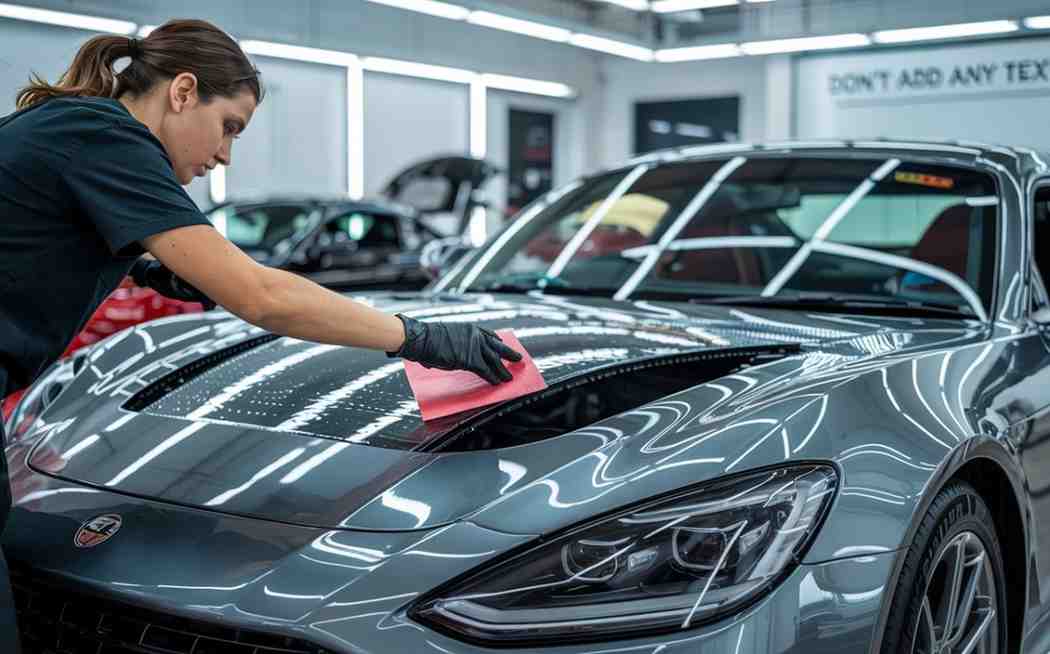When it comes to maintaining your car’s appearance, nothing hurts more than seeing scratches, chips, or faded paint on your prized possession. Whether it’s caused by road debris, harsh weather, or careless parking, paint damage is both common and costly. That’s where Paint Protection Film (PPF) comes into play. This invisible shield offers a smart, long-lasting solution to preserve your vehicle’s showroom finish without frequent touch-ups. Let’s explore how PPF can help you save money on car repainting and why it’s the best way to protect car paint
What is PPF and Why Do You Need It?
Paint Protection Film (PPF) is a high-performance, transparent film that is applied directly to a car’s painted surfaces to provide long-term protection. Known for its self-healing properties, this innovative film creates a durable barrier that defends your vehicle against everyday damage such as scratches, stone chips, bird droppings, stains, and harmful UV rays. It’s widely recognized as the best way to protect car paint, especially for new vehicles, luxury cars, and anyone who wants to maintain that showroom shine for years to come.
One of the key protection film benefits is its ability to reduce the need for frequent touch-ups or full-body repainting. Many car owners now opt for PPF to avoid car repainting, as it prevents the kind of gradual damage that can lead to expensive repairs over time. Rather than reacting to damage after it happens, PPF offers a proactive solution by preserving the integrity and appearance of your car’s original paintwork from day one.
Choosing PPF to avoid car repainting is not just about appearance—it’s also a smart investment. It helps maintain the vehicle’s resale value, reduces long-term maintenance costs, and gives you peace of mind every time you hit the road. That’s the true power of protection film benefits.
Top Protection Film Benefits
Let’s break down the biggest protection film benefits you can expect:
Paint Preservation
PPF forms a durable layer over your vehicle’s paint, preventing common damage from rocks, bugs, and other hazards.
UV Protection
One of the underrated protection film benefits is its ability to shield paint from harmful UV rays that cause fading and discoloration over time.
Self-Healing Surface
Light scratches and swirl marks on the film disappear with heat, keeping the surface looking smooth and new.
Boosts Resale Value
A car with flawless, original paint commands a higher resale price. This makes PPF not just a protection method, but also a smart investment.
By enjoying all these protection film benefits, car owners reduce the risk of needing expensive touch-ups or full repaints.
Why PPF is the Best Way to Protect Car Paint
comprehensive protection, full-body coverage ensures your entire vehicle is shielded from environmental wear and tear.
No matter how often you drive or what kind of terrain you face, PPF delivers consistent, reliable protection. This makes it the go-to solution for those who want peace of mind and a factory-fresh look for years. In short, it’s more than just an upgrade—it’s a smart investment and the best way to protect car paint.
When considering the best way to protect car paint, many car owners compare Paint Protection Film (PPF) with traditional methods like wax and ceramic coatings. Although those options offer basic surface protection and a visual boost, they fall short of the long-term durability provided by PPF. As the best way to protect car paint, PPF creates a tough, transparent layer that absorbs minor scratches, rock chips, and abrasions before they can damage the original finish. Unlike wax or ceramic coatings, which simply sit on top of the paint, PPF acts as a true physical barrier. Many drivers apply it to high-impact zones like the front bumper, hood, door edges, and side mirrors—areas most prone to wear. If you’re searching for the best way to protect car paint and avoid costly touch-ups, PPF is the most effective and reliable choice. It’s trusted by experts and enthusiasts alike as the best way to protect car paint from daily driving damage.
Avoid Costly Paint Repairs with PPF
One of the most compelling reasons car owners choose PPF to avoid car repainting is the financial advantage it offers. Repainting a vehicle, especially with high-quality materials and expert workmanship, can cost anywhere from $2,000 to $10,000—or even more for luxury models or custom finishes. These costs can quickly add up if your car’s paint suffers repeated damage over the years due to everyday wear and tear.
By comparison, installing Paint Protection Film is a one-time investment that typically falls between $1,500 and $6,000, depending on the size of the vehicle and whether you opt for partial or full-body coverage. With durability that lasts up to 10 years, PPF becomes a far more cost-effective option in the long run.
Choosing PPF to avoid car repainting isn’t just about saving money—it’s also about saving time and avoiding unnecessary inconvenience. Dealing with paint damage often means multiple visits to the body shop, extended periods without your car, and the stress of ensuring color matching and quality work. PPF eliminates that hassle altogether by protecting your original paint from the start. It’s a smart, proactive solution that preserves both your car’s appearance and your peace of mind.
The Long-Term Value of PPF
When it comes to maintaining your car’s exterior over time, Paint Protection Film (PPF) stands out as a smart and cost-effective investment. One of the most appealing aspects of PPF is its long-term value. With proper care, PPF can last up to 10 years, offering continuous protection from road debris, UV rays, environmental contaminants, and everyday wear and tear.
Over time, this level of defense translates into lower maintenance costs, since your car’s paint remains intact without the need for frequent touch-ups or costly repaints. It also provides better exterior durability, helping to preserve the vehicle’s original finish even under harsh conditions. One of the most significant protection film benefits is its impact on resale value—a car with well-maintained, factory-quality paint is more appealing to potential buyers.
Additionally, PPF ensures consistent paint quality and appearance, helping your vehicle maintain that fresh, polished look for years. These long-term advantages are why more drivers are turning to PPF to avoid car repainting, whether their vehicle is brand new or slightly older. From a long-term ownership perspective, PPF is a smart, forward-thinking choice that protects your investment and keeps your car looking its best.
Conclusion
If you’re truly looking for a smarter, more efficient way to preserve your car’s appearance, avoid frequent maintenance costs, and increase resale value, then investing in Paint Protection Film is the right move. The protection film benefits speak for themselves—from UV resistance and self-healing technology to chemical durability and hydrophobic properties.
It’s the best way to protect car paint, hands down, especially in the face of today’s demanding driving conditions. More importantly, using PPF to avoid car repainting isn’t just about preventing damage, it’s about long-term savings, enhanced aesthetics, and confidence on the road.
Invest once in quality PPF, and your car will thank you for years to come.



